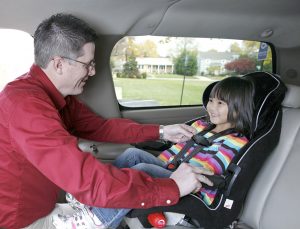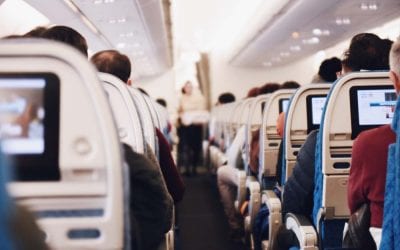Many Americans are planning driving trips for the coming holidays to visit friends and family. Quite a few of the trips will include newborns, infants and toddlers. That will require the purchase, installation and use of car safety seats (CSS).

In the study, Unsafe from the Start: Serious Misuse of Car Safety Seats at Newborn Discharge, released earlier this year by the Journal of Pediatrics, nearly all (95 percent) CSSs were misused, with one or more errors in positioning and/or installation. Serious CSS misuse occurred for 91 percent of all infants.
The most frequent misuses included harness and chest clip errors, incorrect recline angle, and seat belt/lower anchor use errors.
When driving with a youngster in your car or a rental car, one of the most important jobs parents and grandparents have is keeping them safe in the car. The proper use of CSSs can keep children safe in a sudden, rapid stop or accident.
According to the Centers for Disease Control and Prevention (CDC), in the U.S. during 2014 alone, 602 children ages 12 years and younger died as occupants in motor vehicle crashes. More than 121,350 were injured. Of those children who died, 34 percent were not buckled in a CSS, booster seat or seat belt.
The first problem in protecting children in the car is to obtain the right type of car safety seat. Choosing the right CSS depends primarily on a child’s age and size.
The National Highway Traffic Safety Administration (NHTSA) has detailed recommendations for buckling in children into motor vehicles to keep them safe.
As a general rule of thumb, the American Academy of Pediatrics suggests the following:
- Infants and toddlers — All infants and toddlers should ride in rear-facing car safety seats until they are at least two years of age or reach the maximum weight or height for the seat as stated by the car seat manufacturer.
- Toddlers and preschoolers — Children who have outgrown rear-facing seats should use forward-facing car safety seats, with a harness, until they reach the maximum weight or height for the seat as stated by the car seat manufacturer.
- School aged children — Children who have outgrown forward-facing car safety seats should use belt-positioning booster seats until standard car seat lap and shoulder belts properly fit them.
- Children under the age of 13 years old — All children under the age of 13 should ride in the back seat regardless of the type of seating used.
Car safety seats can be installed with either the vehicle’s seat belt or the Lower Anchors and Tethers for Children (LATCH) system.

If you install a CSS with a seat belt, make sure the seat belt locks to ensure the CSS is tightly and safely anchored. In most newer vehicles, this means pulling out the seat belt all the way, then allowing it to retract until locked tight in place.
To use a rear-facing safety seat follow these essential tips:
- The seat belt or anchor should be placed in the slots provided in the seat to prevent slippage.
- The seat belt must be as tight as possible. You shouldn’t be able to pinch it tighter.
- Always use a rear-facing seat in the back seat.
- Make sure the seat is at the correct angle so the infant in it doesn’t flop its head forward. The angle should be able to be adjusted.
To use a forward-facing safety seat follow these essential tips:
- You may have to adjust the reclined angle of the seat so that it sits more upright in your vehicle.
- If using a seat belt to anchor the seat, make sure it runs through the forward-facing belt path and that it’s locked tightly. You shouldn’t be able to pinch it tighter. If using the LATCH system, follow the CSS instructions carefully along with your vehicle’s owner’s manual.
- One of the most important installation tips for forward-facing CSSs is to always use the top tether, if it’s at all possible. The top tether is a strap that’s attached to the top of the CSS to prevent it from tipping forward during a sudden, rapid stop or accident, protecting the child’s head. It connects to an anchor point in your vehicle. In the U.S., all new cars, minivans, and light trucks are required to have tether anchors as of September 2000.
Prior to a driving trip, many families will fly to the beginning of the drive. The Federal Aviation Administration (FAA) recommends that children less than 40 pounds are securely fastened in their seats via a certified CSS while flying. Children should be securely fastened during the entire flight except when taken to the lavatory.
Whether driving or flying, a car safety seat is essential to protect young children’s lives.
(Image: Courtesy of the National Highway Traffic Safety Administration)
After many years working in corporate America as a chemical engineer, executive and eventually CFO of a multinational manufacturer, Ned founded a tech consulting company and later restarted NSL Photography, his photography business. Before entering the corporate world, Ned worked as a Public Health Engineer for the Philadelphia Department of Public Health. As a well known corporate, travel and wildlife photographer, Ned travels the world writing about travel and photography, as well as running photography workshops, seminars and photowalks. Visit Ned’s Photography Blog and Galleries.



